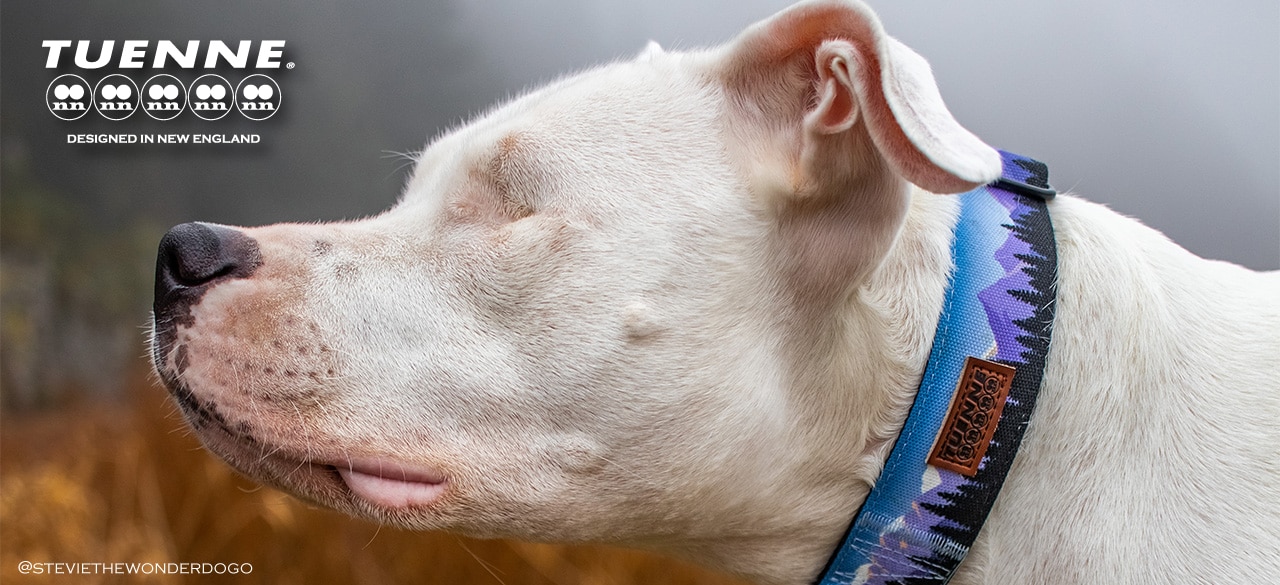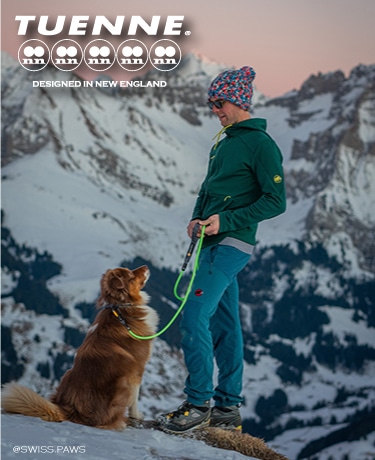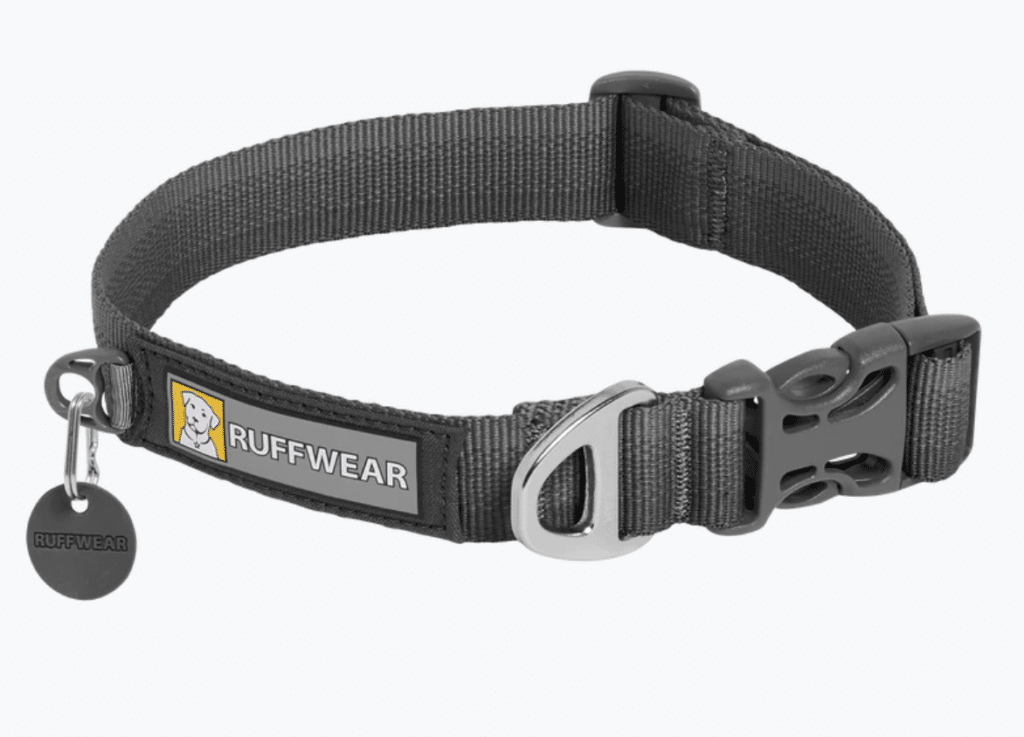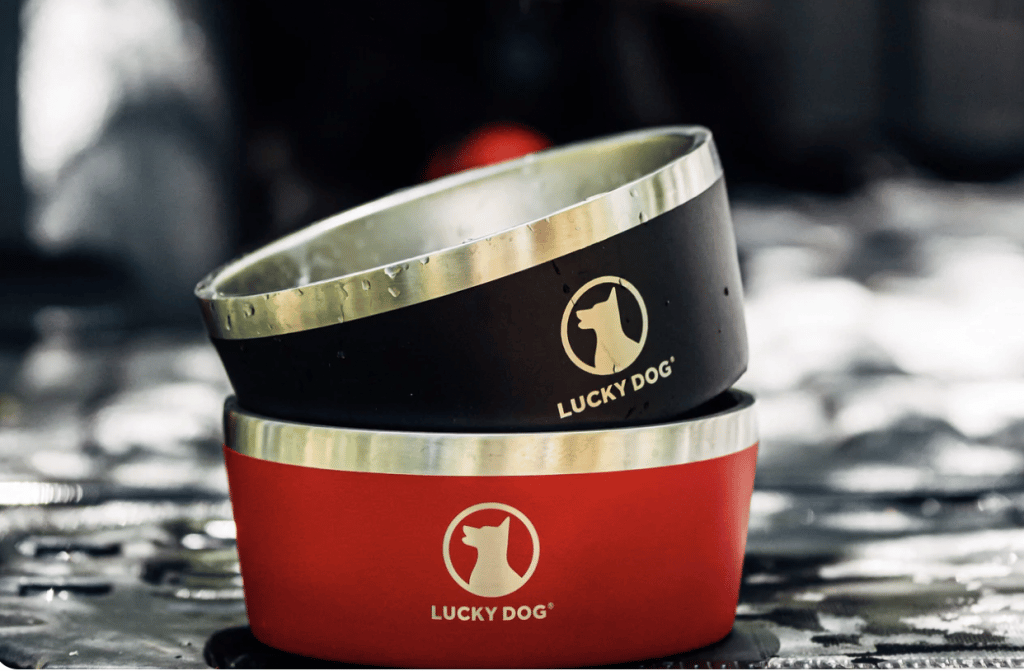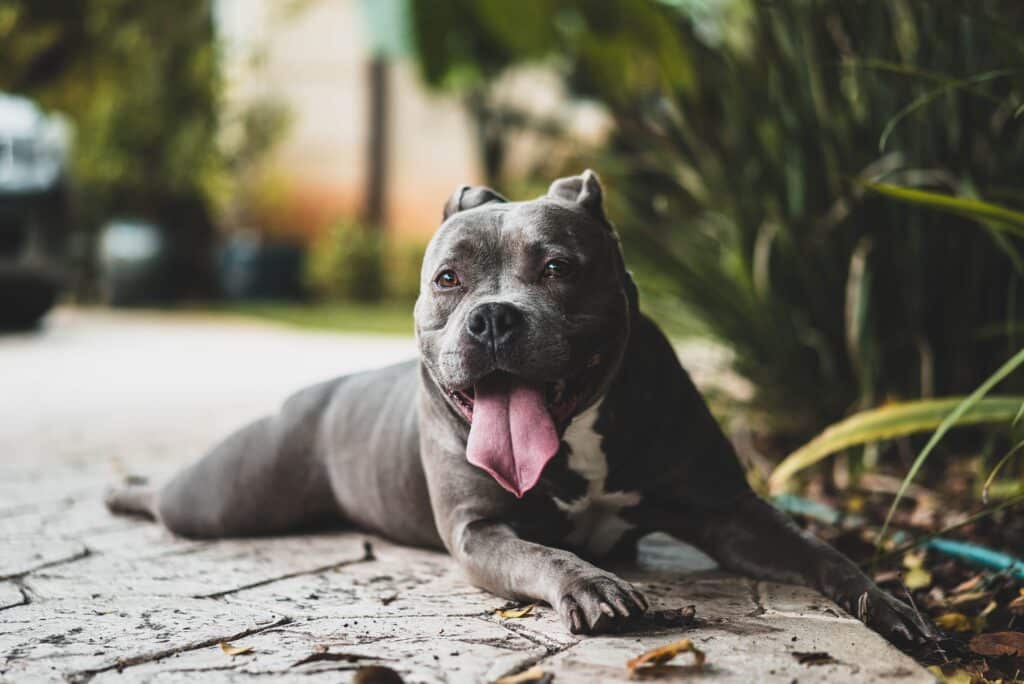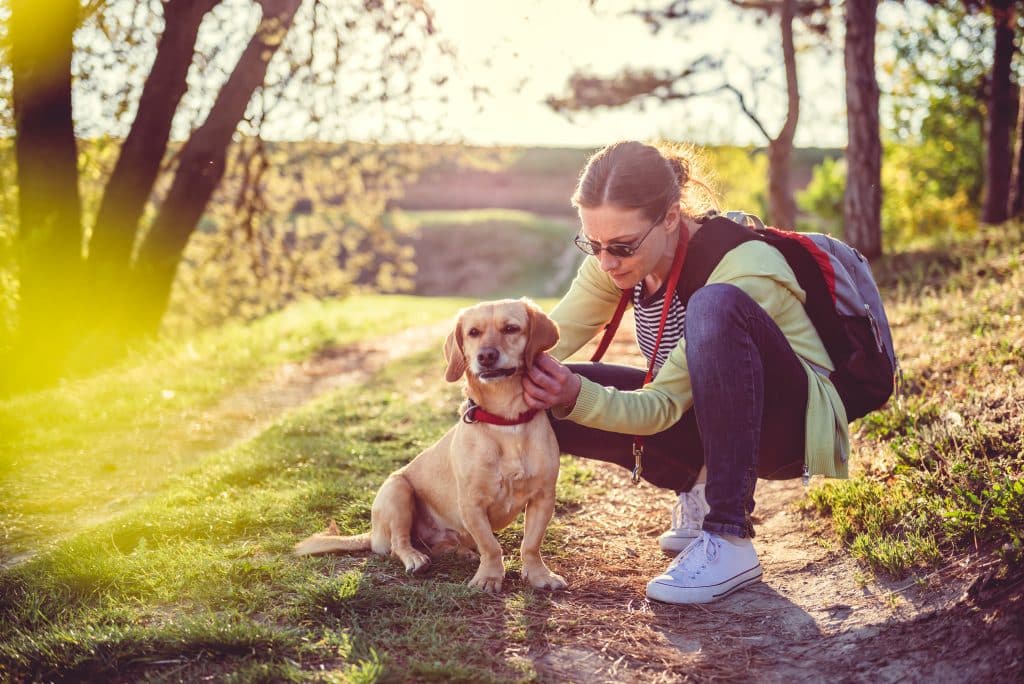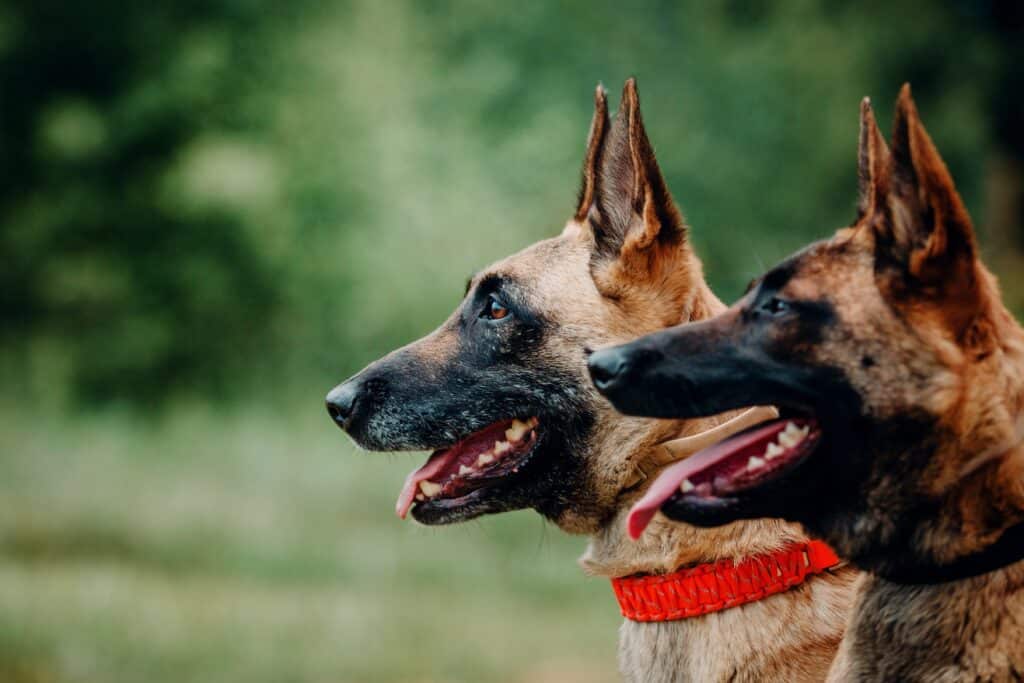Compelled to self-isolate over the last two years due to COVID restrictions, many dog lovers chose to adopt rescue dogs to help them get through the boredom and loneliness. With time on their hands, bringing a needy dog into the home seemed like a perfect decision—and a compassionate one, too.
Seattle resident Caryn Schutzler is one of these pandemic rescuers. A recent retiree, Caryn was thrilled at first to bring home her rescue dog, Jessie, a charismatic lab/spaniel mix with foxy ears and a spirited personality. Jessie was rescued in Puerto Rico by one group, vetted on site for health and behavior, then transported to Seattle by a second group. Once there, a third rescue organization, Animals In Need, arranged for her adoption. This three-pronged dog adoption model—and the great journeys it often involves—has become the status quo across the nation, especially in areas where there’s a dearth of local adoptable dogs.
But because of the miles traveled, the pressures of relocation, and the interactions with so many strangers along the way, these long-distance rescue dogs often undergo more trauma than purebreds or rescues from local environs. Caryn’s dog Jessie lived with a pack of strays on a dairy farm in Puerto Rico; without initial meaningful human contact, Jessie had a long way to go before she could fit into “normal” Seattle living. But Caryn was determined to make it work.
She hired an experienced local trainer who evaluated Jessie and came up with a plan to help the dog acclimate to life away from the dairy farm. The dog’s skittishness, hypervigilance, and lack of focus, combined with a penchant for escape, all needed to be addressed in a manner that Caryn could deal with on a daily basis. The work was daunting, but Caryn was game.
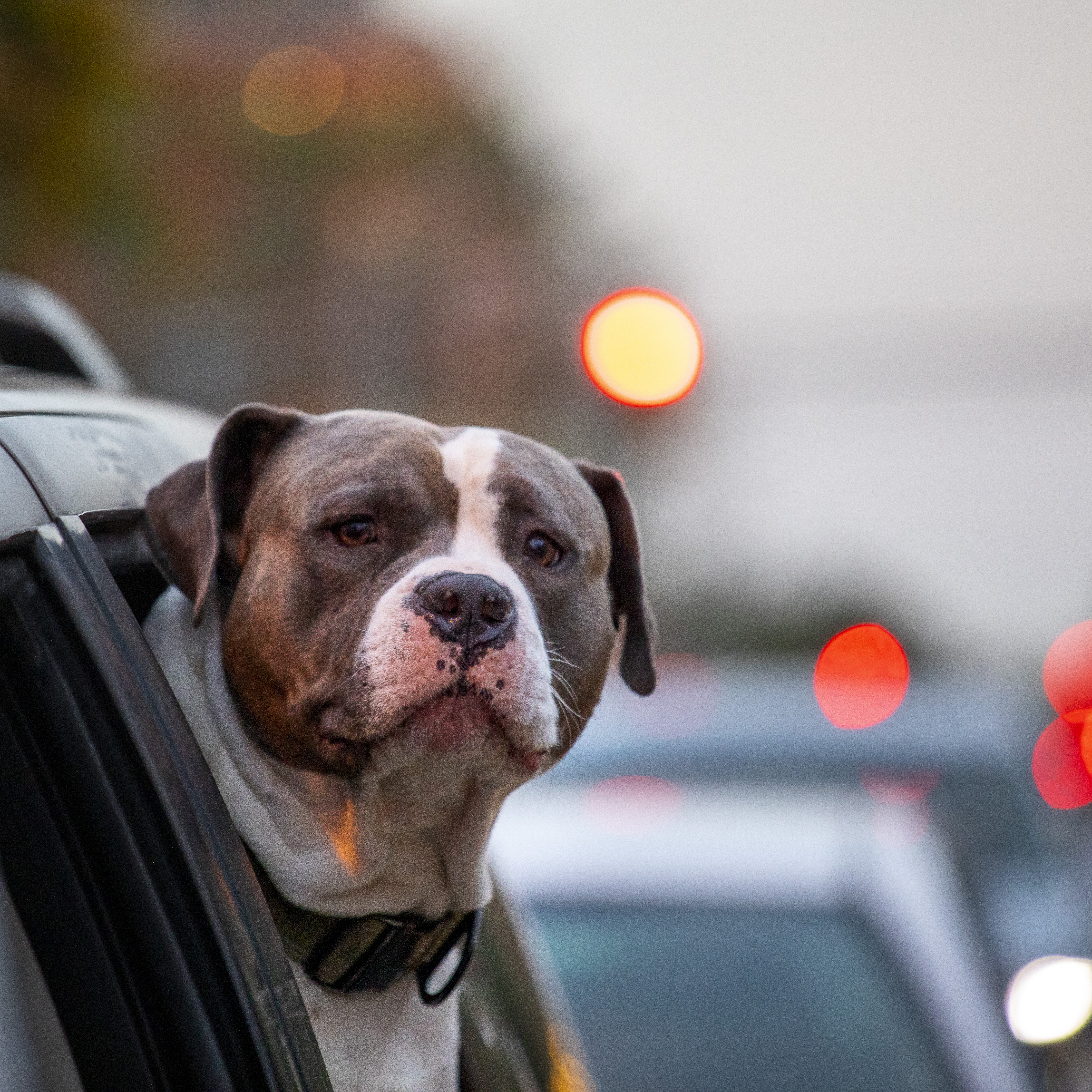
Dog in transit near Jersey City, New Jersey. Photo: Scott Jones
Where Have All the Doggies Gone?
Over the past decade, a surprising scarcity of adoptable rescue dogs in select regions of the country has come about as a result of dedicated rescue organizations excelling at their job. Neutering drives, determined fund raising, and public education have resulted in a low incidence of dogs wandering the streets of Seattle, Madison, Denver, Danbury, and other dog-loving communities. Their efforts, paradoxically, worked too well. With few local rescue dogs left to place, shelters found their raison d’etre in question. The solution to their dilemma would come from well outside their own regional sphere of influence.
While places like Washington, New York, Wisconsin, and Colorado have experienced a declining supply of adoptable rescue dogs (and a rise in demand), other areas such as Texas, California, Arizona, Alabama, South Carolina, Georgia, Mexico, Puerto Rico, and the Philippines continue to produce a perpetual glut of strays. The causes are complex, but include poverty, a less informed outlook on pet welfare, limited adoption services, hesitation to neuter, and a history of allowing dogs to roam.
Fortunately, rescue organizations with a high demand for adoptions have partnered with organizations in high supply areas, orchestrating a mass “migration” of rescue dogs from one region to another. This symbiotic relationship saves thousands of dogs and helps all rescuers keep doing what they do best—finding homes for needy pets.
The Journey of Today’s Rescue Dog
The basic concept of why certain dogs need to be rescued hasn’t changed much over time: a stray gets brought in to a shelter; an unexpected litter of puppies is brought to the Humane Society; an “impulse buy” is surrendered.
What has changed is the distance many dogs travel to get to their forever homes. A Texas rescue, for example, might travel over a thousand miles to get to its final adoption destination. Puerto Rico rescues (called “satos”) will fly nearly two thousand miles to New York, then travel additional distances domestically. The aforementioned dog, Jessie—a sato rescue—traveled nearly five thousand miles before arriving at her forever home in Seattle. The stress of initial neglect, combined with extensive travel—not to mention that these dogs are necessarily handled by multiple strangers along the way—can sometimes make this new adoption model traumatic.
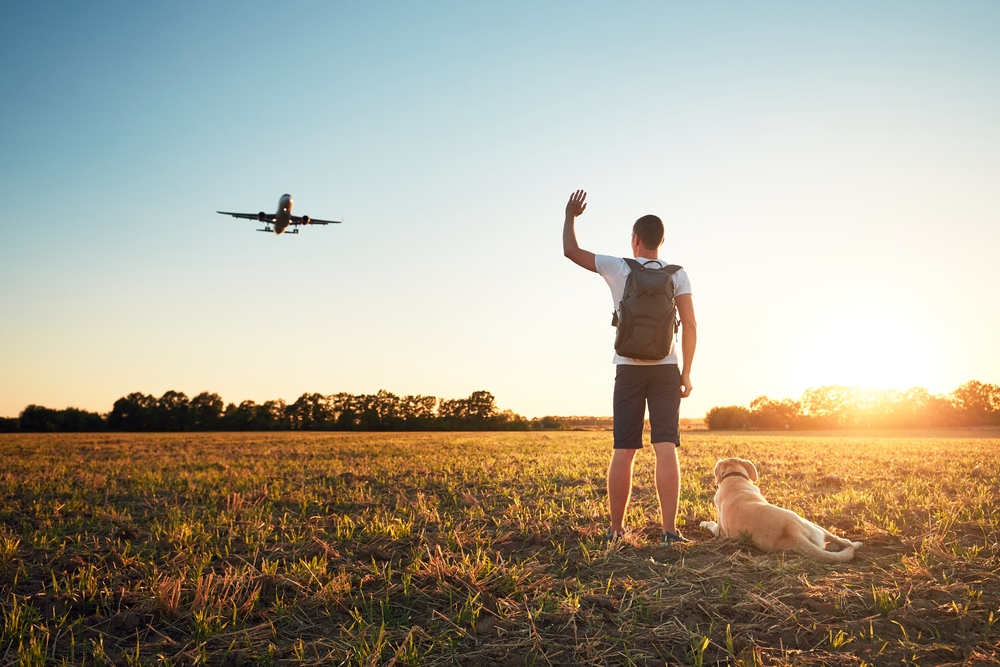
Photo by Jaromir Chalabala.
The Typical Long-Distance Rescue
The temperaments of long-distance rescue dogs can vary considerably, but they often exhibit an initially wary disposition. Many have had to adopt workable survival techniques: street life brings competition for food and shelter, as well as dangers from vehicles, weather, and humans. This can create a cautious dog with trust issues, and a watchfulness that may not immediately vanish once a dog is in a stable environment. But with time and training, significant improvement is possible.
Jenny Nordin, founder and director of Dog Gone Seattle, knows all about managing long-distance rescues. Partnering with organizations in Texas and California, her 501c3 cleverly uses local foster homes to care for and house new arrivals. They immediately begin training and socialization, vital to successful adoptions. She herself has fostered hundreds of rescues.
“The travel stress is often not as bad as people think,” she says. “Many of the dogs take it in stride. The transport people are diligent and caring.”
Most of Dog Gone Seattle’s rescue dogs come from either rural Texas or the San Bernadino region of California. “Texas dogs are usually discarded strays that roam in loose packs, making them relatively dog sociable. But they often have poor leash skills.” The California dogs—she calls them “fence dogs”—are mostly pits, pit mixes, German Shepherds, and Chihuahuas. “They tend to be more barrier reactive, as they are usually kept in fenced yards, creating a defensive attitude. They have more leash experience, but because most are surrenders, show more abandonment issues than Texas dogs.”
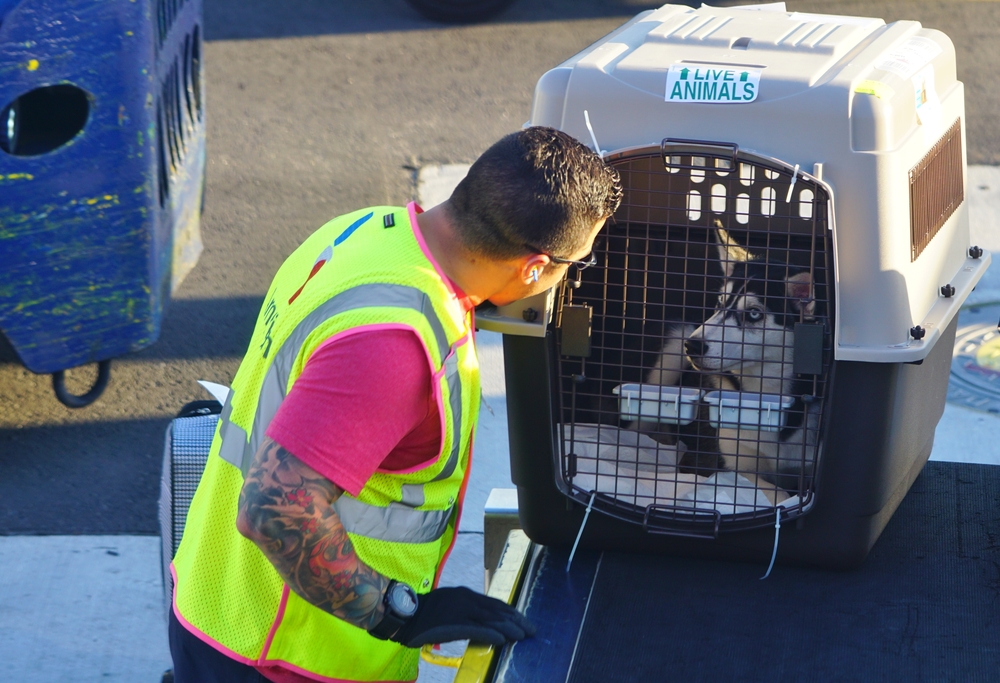
A baggage handler at Miami International Airport connects with a crated dog in transport.
Photo by EQRoy
The Transporters
One of Dog Gone Seattle’s transport partners is Dog Is My CoPilot, a 501c3 based in Jackson, Wyoming. Providing air services at no cost to shelters and adoption organizations, they fly dogs from Texas, Arizona, New Mexico, and California to regions where loving families are waiting. Doctor Peter E. Rork, a surgeon and lifelong pilot, co-founded the organization in 2012 with the goal of saving as many animal lives as possible. Since their inception, their team of volunteer pilots have helped save thousands of dogs. “Air transit is faster, cheaper, and less stressful to the dogs than long-distance road transport,” says Kara Pollard, executive director for Dog Is My CoPilot.
The nine pilots fly Cessna Caravan 208B propeller-driven aircraft; normally twelve-passenger planes, they are stripped of seats to allow for maximum crate capacity, which can be anywhere from fifty to a hundred dogs, depending on size. “A typical route for us begins with a flight to El Paso, Texas, where participating shelters load us up with vetted dogs. Then we fly to Salt Lake City, Utah, drop dogs off for local shelters, and then off to Portland and Seattle. The next day we fly to Merced, California to pick up more dogs, and repeat the delivery process to the same cities.” The aircraft fly at a maximum of 12,000 feet, preventing the need for a pressurized cabin, while ensuring that the cargo area stays cool.
Cara says that all crates are securely strapped into position, and that before the dogs board, volunteers make sure their passengers have relieved themselves and gotten a drink. “The trips are fast enough so that we need not give them water on the flight. We provide them with bowls of ice, though, in case they do get thirsty or hot.”
Opting instead for road transportation, Project Freedom Ride (PFR)—another transporter that Dog Gone Seattle depends on—uses insulated, climate-controlled Sprinter vans to move from forty to one hundred dogs per transport (depending on dog size). Established in 2016 by Jenn McConn, the impetus for the non-profit was Jenn’s five-year-old son Roman, who, when informed that Texas had kill shelters, decided he needed to find a way to help. His dedication has won him appearances on Ellen, The Today Show, and multiple morning television shows across the nation. “Since 2016, we have moved more than 4,000 dogs from Texas and Georgia to cities in the Northwest and Northeast,” says Jenn.
PFR bring dogs either to a direct adopter family or to a local participating shelter, which already has vetted interested, eager adopter families. “We are licensed by the FDA; not all transporters are,” adds Jenn. “The dogs have access to water in their crates, which are securely anchored to the van’s walls.” Her drivers stop every four to eight hours to walk the dogs and to check on their condition. PFR even airs the van’s progress live on Facebook and sends email updates to waiting adopters throughout the process.
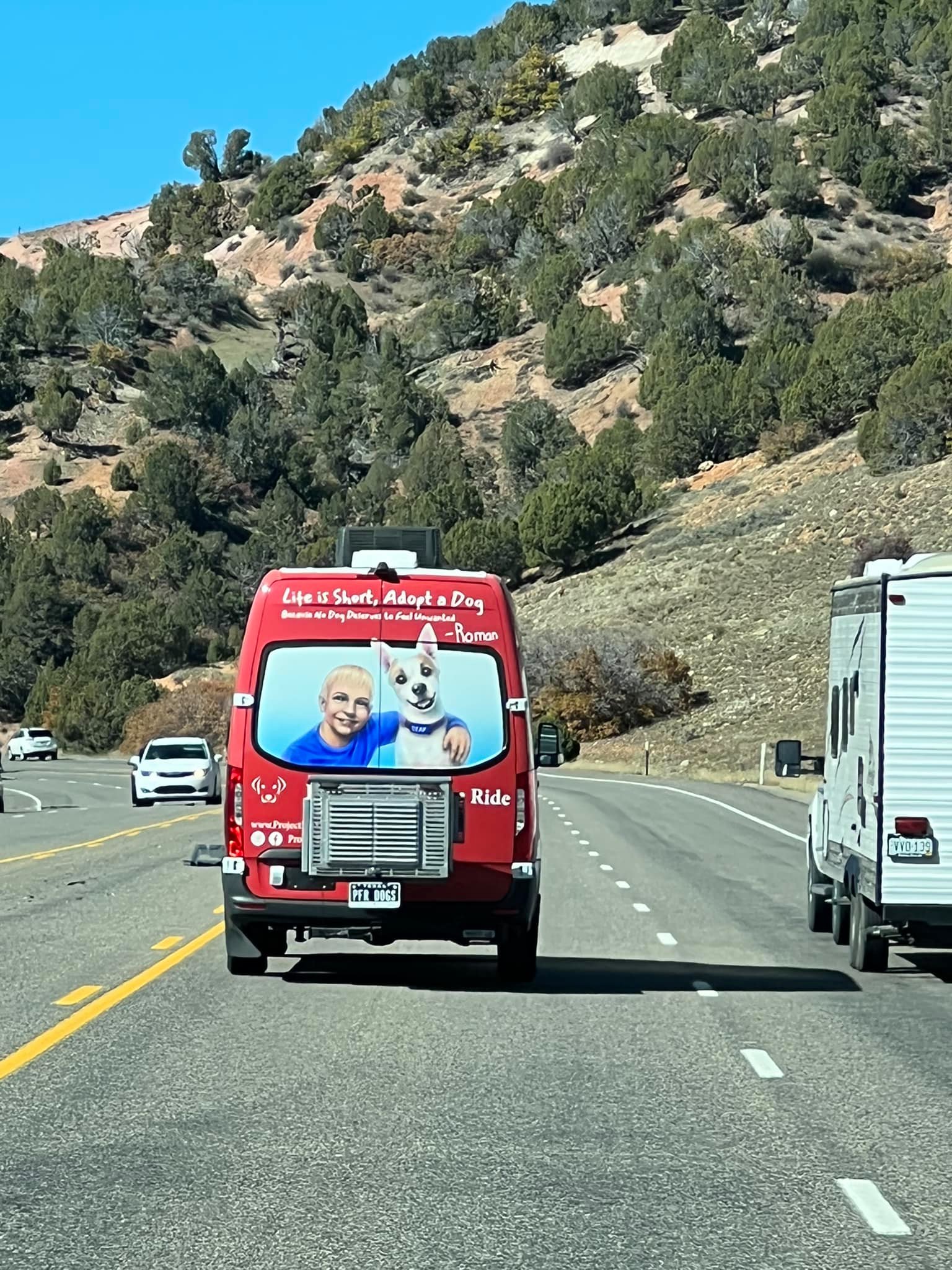
One of Project Freedom Ride’s transport vans.
The Effects of the Fear Imprint Stages
Dog psychology can be profoundly affected by bad experiences during two crucial developmental periods known as “fear imprint” stages. The first occurs from eight to eleven weeks; the second, from roughly six to fourteen months. During the first imprint period, canid pups are just leaving the den to explore. Puppies have an initial lack of fear of things they should be afraid of—bear, cougar, fire—whatever might hurt them. So, nature has designed this imprint period to be a “teacher.”
“A lack of caution may cause them to easily get killed,” explains Certified Applied Animal Behaviorist Patricia McConnell in her book For the Love of a Dog. Puppies born to strays are likely to experience significant stress during this eight-to-eleven-week period. Being born outdoors near all manner of threats can trigger cautious behaviors later in life. Coincidentally, in domestic settings, this fear period corresponds with the time most puppies are separated from their litter mates and moms and sent to new homes. Many behaviorists and breeders now recommend puppies stay with the mother and litter until the twelfth week, to prevent psychological stress from occurring during this fear imprint stage. This is why rescue organizations try to rescue pregnant mothers before their puppies are born. Unfortunately, in rescue situations, this isn’t always possible.
The second fear imprint stage, from about six to fourteen months, occurs in canids old enough to start hunting with their packs, during which time risks can occur. An eight-month-old wolf pup, for example, must learn which animals are safe to chase, and which are dangerous to approach. They are also becoming sexually active and must learn courting etiquette.
This second stage lasts longer and can cause dogs to react unpredictably to stimuli they previously had no fear of. Examples can be novel barking at strangers, a fear of certain dog breeds, or even a fear of hats. Many adoptable strays at this age are likely to have had stressful experiences influence their temperaments. Some will have had to compete for food, while others will have been abused—resulting in an anti-social mindset that can apply to dogs and humans alike. Inclement weather, disease, and even possible predation from raccoons, coyotes, and other wild animals are also threats that can leave their mark on the psyches of strays.
Jennifer Miller, president of Friends of the Animal Shelter (FOTAS) in Aiken, South Carolina, co-founded the volunteer organization in 2009 to supplement the resources of the Aiken County Animal Shelter in the care of over 4,000 abandoned animals each year—making her well-versed in the temperaments of strays and rescues. “With regard to strays,” explains Jennifer, “they can initially be defensive and anti-social. Some of them have been chained constantly, and as such develop a territorial mentality. And some, understandably, show food guarding issues. Others, especially those surrendered from a home, become emotionally overwhelmed by the sudden abandonment.”
And then there are the effects that long-distance travel can have on a young rescue’s disposition, which Taylor Plimpton, Human Executive Editor for Love, Dog, experienced firsthand. Pre-pandemic, he contacted Gimme Shelter, a 501c3 rescue organization in Sagaponack, NY, and arranged for the adoption of a five-month-old, scruffy little mix named Brooklyn, who came up to New York from South Carolina in a van with her littermates. When she arrived, her little white paws were stained pink from the Pepto Bismol given her to combat car sickness.
“For the next three years,” says Taylor, “Brooklyn had to be lifted up to get her into the car, where she’d lie in the back, looking stressed and drooling. She’s much better now, but she’s never going to be one of those dogs who enjoy going for a ride.”
At the time of adoption, Brooklyn was just about to enter her second fear-imprint stage—a fact that guaranteed her eight-hundred-mile car sickness saga would not be easily forgotten.
But as Jennifer Miller reminds us, there’s hope for the future of all rescues, no matter their past. “Most strays are resilient,” she adds. “They are better forgivers than we are.”
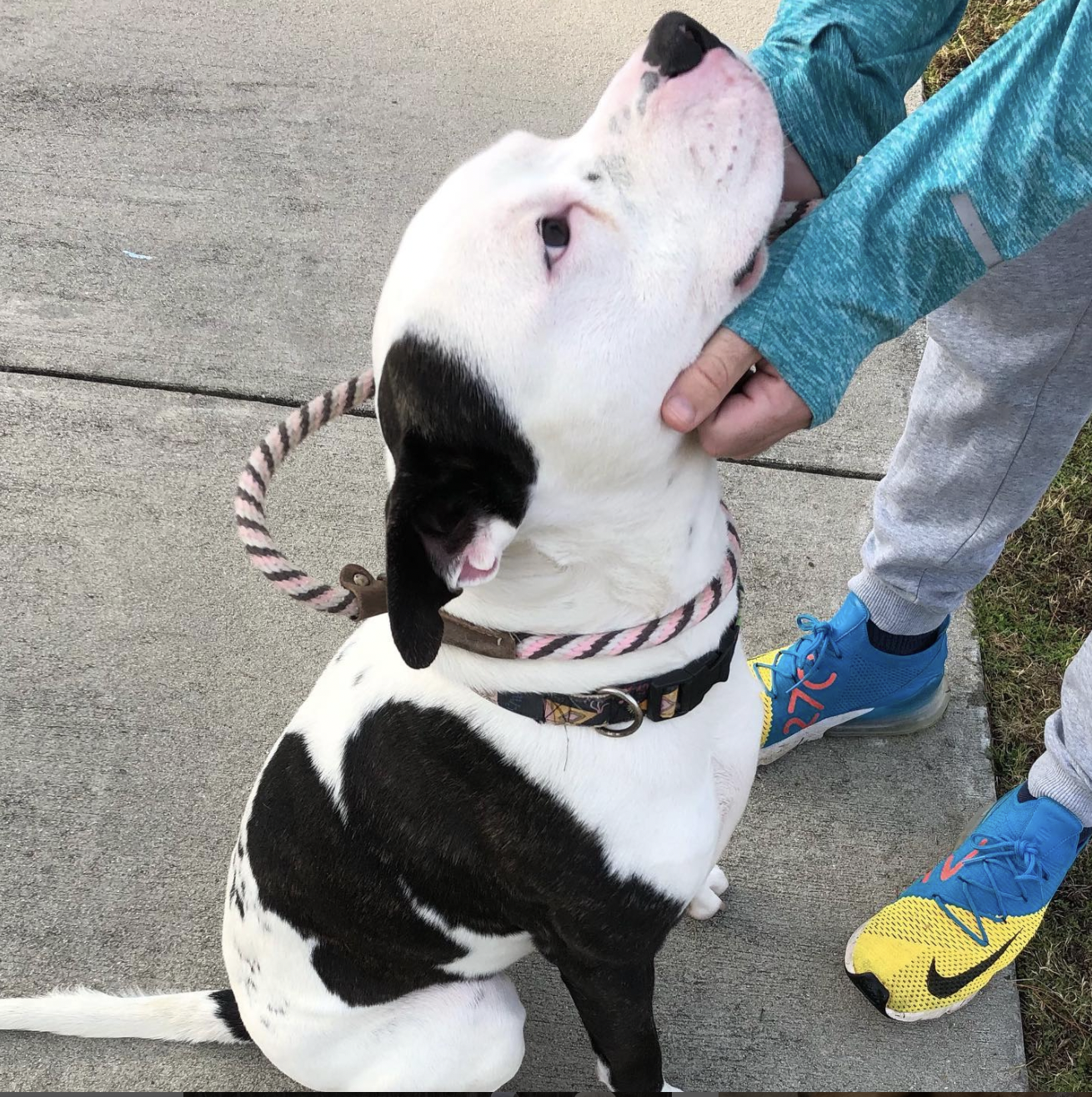
A rescue pup from Friends of the Animal Shelter in Aiken, South Carolina.
Bringing Your Long-Distance Rescue Dog Home
Your new dog has survived the rigors of the migration process and made it to your home. The rescue organizations have vetted her health, de-wormed, neutered and vaccinated them, and most likely provided you with some food. What’s next?
First, go slow. Jenny of Dog Gone Seattle advises adopters of rescue dogs not to overwhelm them with gratis attention at first, but to instead create a calm, structured environment they can count on. Avoid manic displays of emotion, roughhousing, or tight hugging. Talk in a relaxed manner. Let them sniff around, but do not yet give them free reign of the home. Give them an on-leash guided tour. Use these first few hours to learn about each other.
Consider a few basic equipment purchases. First, have a dog crate on hand. Due to travel trauma, unreliable routine, or puppyhood, rescue dogs often have poor housetraining habits, and so need initial crating at night, or whenever unsupervised. Even if the dog seems housetrained, they might be “off their game.” Luckily, most long-distance rescues have already experienced crating, at least during the transport process.
No matter their age, treat them as a puppy at first, to establish rules and routine. Feed meals in the crate, and have them sleep in it too, at least initially. Toss treats into the crate; make a game out of going in.
Rescue dogs can initially have a strong flight response to new stimuli, so make sure to properly fit whatever collar or harness you decide upon, preventing escape. Along these lines, be sure your dog is microchipped, and that they have a proper ID tag on their collar.
Routine!
Most long-distance strays learned to fend for themselves. This independent mindset can make for a careful dog with trust issues. Though necessary for street survival, it works against them once in the home. A wary dog will walk poorly, showing bad focus and reactivity to other dogs and an overly vigilant attitude.
The answer? Establish a reliable routine. Dogs recognize routine quickly and become fond of its dependability. They learn that breakfast is served now, a walk comes now, play time comes now, dinner is now, bedtime is now. This steadfast scheduling of the dog’s day is a prime ingredient in developing trust, anticipation, and confidence. It also reassures them of your dedication.
Conversely, allow your long-distance rescue too much independence too soon, and they may retain that self-sufficient “street” mindset. Escape, destruction of furniture, carpets, curtains, remote controls, cell phones—you name it, it can happen. Housetraining? Sketchy. Manners? Ditto. Jumping and nipping? Probably. Additionally, resource guarding is common with street dogs, as they have often fought for scraps. And if children are present, the dog may be wary of their spontaneity.
Long-distance rescues need boundaries, rules, and leash work, both outside and in the home. Only as they begin to settle in should you ease up and increase freedoms.
Mindful Management
Any dog that has lived a rough life, then traveled thousands of miles to be with you, is almost certainly going to have behavioral quirks to overcome. Emotionally taxed by difficult beginnings, long-distance journeys, and the trials of rescue, pandemic puppies can sometimes be more than even the best-intentioned adopters bargained for. This is partly why all devoted rescue organizations have embraced comprehensive adoption criteria to ensure dogs go to optimal homes, and to dissuade the sorts of impulse adoptions we saw during the height of the COVID lockdowns—the exact kind of adoptions that can lead to returns.
Fortunately, dogs being dogs, they usually adapt, overcoming past trauma and going on to live happy lives. Seeking out the help of professional dog trainers can help them with this. Still, a few rescue pups may hold onto certain psychological vulnerabilities. Like humans with PTSD, these dogs will not get “better” overnight. If your rescue dog continues to show fear, reactivity, or anti-social tendencies, you need to manage these. If, for instance, walking in busy areas still evokes leash reactivity, then stop walking the dog in those busy environments. Choose a calmer area at a quieter time, without the triggering stimuli.
If your dog cannot relax around strangers or other dogs, then accept her limitations, and restrict contact to only those she trusts. Just as people with fear of heights can often never adapt to desensitization therapy, so too are some dogs unable to adapt. In this case, eliminate the triggers, and find alternatives to help her relax.
Does she incessantly bark at passersby while looking out the window? Manage it by closing the blinds. Does she skulk in the corners of a dog park? Stop taking her to the dog park. Instead, get her to accept walking near one or two sweet neighborhood dogs. Does she snap at people who try to pet her? Instruct them to act indifferently, while dropping a treat or two. Does she destroy stuffed dog toys? Opt for more durable toys made of hard rubber. With some dogs, it is not avoidance; it is mindful management.
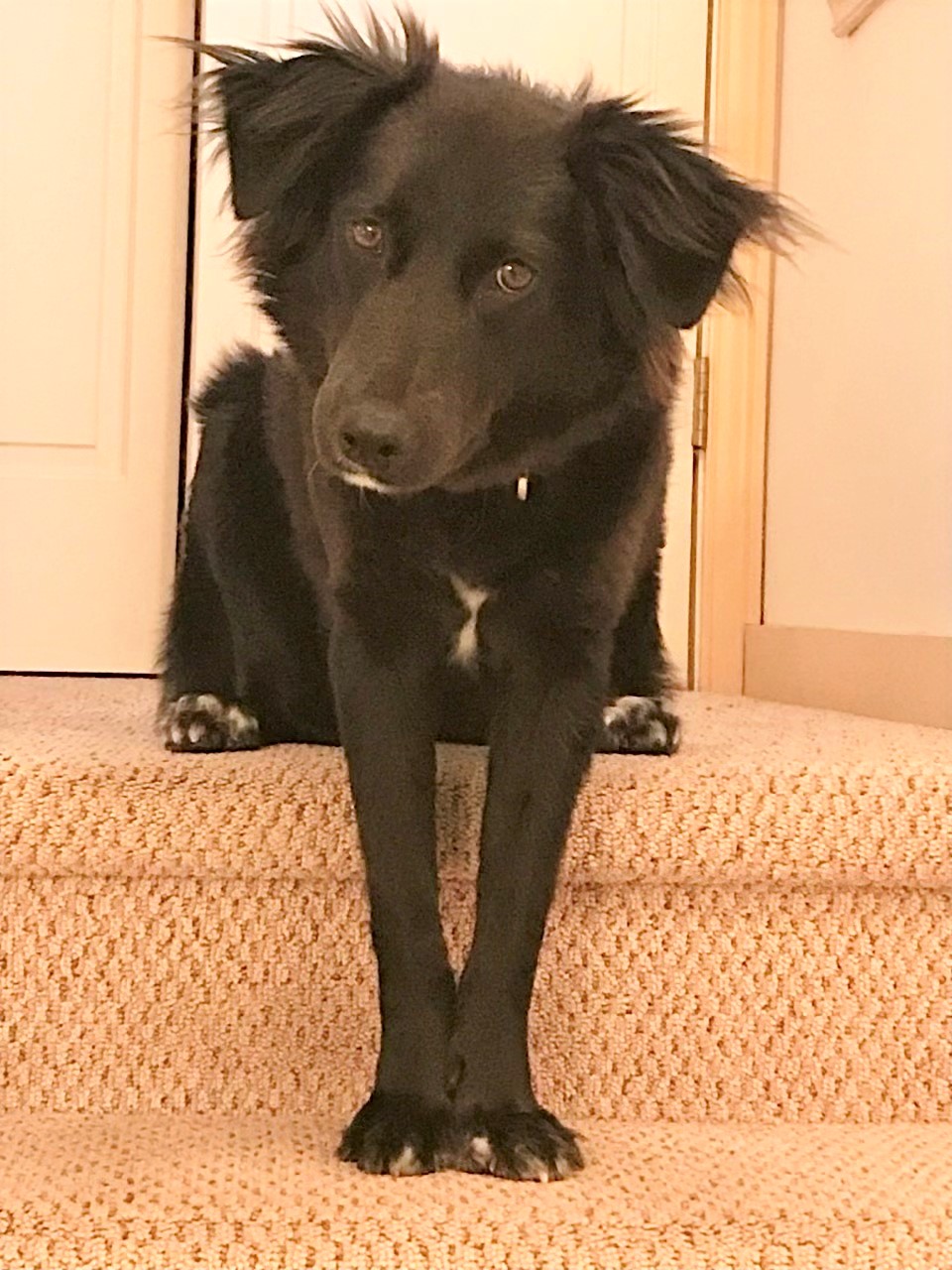
Jessie, a long-distance “sato” rescue from Puerto Rico who’s found a happy new home in Seattle.
Happy Endings
Caryn and Jessie put in five weeks of training and made great progress. The trainer taught Caryn how to be the “choreographer” on walks, how to teach focus, and how to deal with impulsive jumping. Jessie still shows some reactivity issues with other dogs, but overall, the training has helped dramatically raise the confidence of both the dog and her human. Work with a fifteen-foot longline was particularly helpful in teaching a decent recall, and in improving focus from a distance. And a more structured daily routine has improved life for everyone. Jessie’s tough days in Puerto Rico are far behind her, and it’s looking like her life with Caryn in Seattle will be a happy and adventurous one.
subscription
LOVE, DOG

